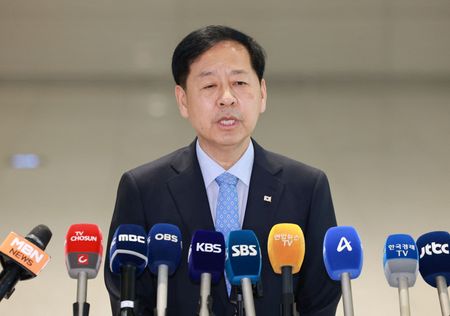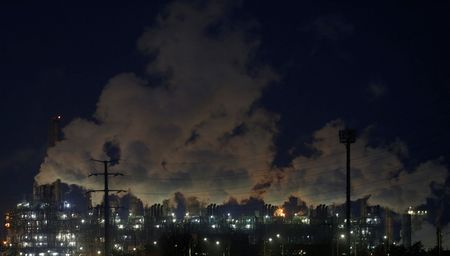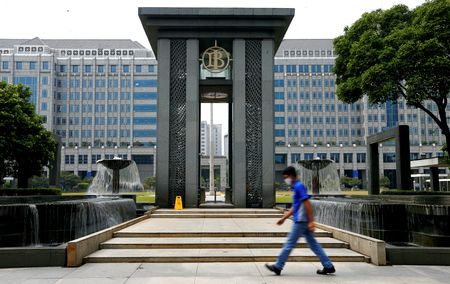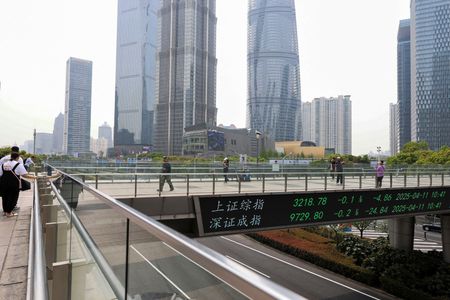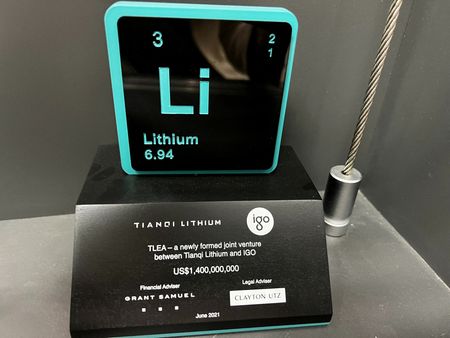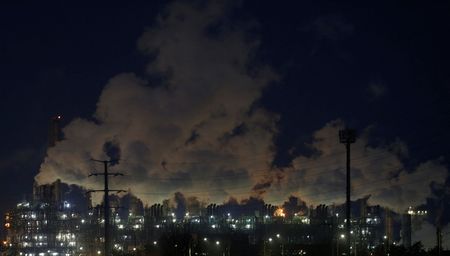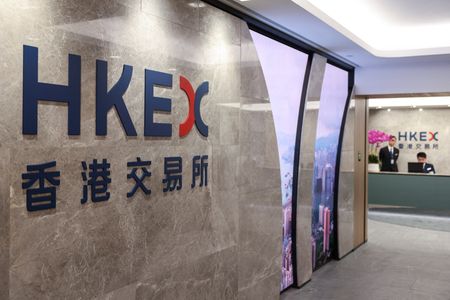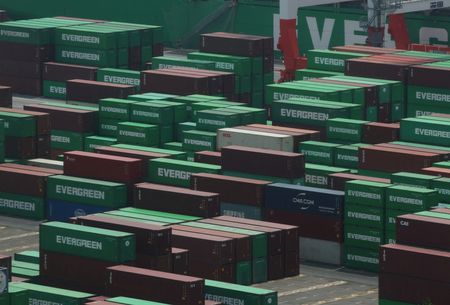By Heejin Kim
SEOUL (Reuters) -Ten South Korean petrochemical companies have agreed to restructure their operations, including large cuts to their naphtha-cracking capacity, government officials said on Wednesday.
South Korea’s government has been putting pressure on a petrochemical sector it says is in “crisis” to speed up restructuring to boost efficiency and raise flagging margins.
Executives from the companies signed an industry-wide agreement for restructuring at a meeting attended by the Minister of Trade, Industry and Energy Kim Jung-kwan.
The companies have agreed to reduce their annual naphtha-cracking capacity by between 2.7 million and 3.7 million metric tons, the country’s industry ministry said. That would mean shutting down as much as 25% of the country’s annual capacity, according to Reuters calculations based on total capacity of 14.7 million tons.
The companies will need to submit an outline on how the cuts will be done by the end of the year, the statement said.
“The key for overcoming this crisis is clear – reducing capacity and restoring fundamental competitiveness,” Koo said.
The petrochemical industry made a mistake by allowing overcapacity and failing to shift to making higher-value products, he said.
The government will ease regulations and offer financial and taxation support for companies that sincerely make efforts to rescue themselves, he said.
Authorities would not tolerate any “free riders” expecting government aid without trying to restructure, Koo said.
South Korea is one of the world’s largest importers of naphtha, an oil product that is broken down into chemicals used in plastics for automobiles, electronics, clothing and construction. If the country is forced to cut capacity, it could impact global oil markets.
RESTRUCTURING GOALS
Hwang Kyu-won, an analyst at Yuanta Securities Korea, said the fact that the government was leading the plan and was linking financial support to restructuring meant companies would not be able to avoid pressure to take action.
“The targets should be debt-ridden companies or those running very old facilities. The government may pressure them to merge with each other,” said Hwang.
South Korea’s leading petrochemical companies include LG Chem, which is the top producer of ethylene and propylene, as well as GS Caltex, Lotte Chemical, Hanwha TotalEnergies, S-Oil and HD Hyundai Chemical.
There have been particular concerns over the financial health of South Korea’s Yeochun NCC Co (YNCC), a loss-making petrochemical maker that media say faces 180 billion won ($130 million) in loans coming due in August.
YNCC, a joint venture between DL Chemical and Hanwha Solutions, has not responded to requests for comment. DL Chemical and Hanwha Solutions were not immediately available for comment.
Chua Sok Peng, LSEG lead analyst for LPG and petrochemicals, also echoed that restructuring should “not be that tough, since everyone knows they need to do it in order to survive the overcapacity crisis.”
The last major restructuring for South Korea’s petrochemical industry was in 1999 during the Asian Financial Crisis, when YNCC was formed.
The Korean government has set three goals for the restructuring, reducing overcapacity and facilities, improving finances at companies and minimising the impact on local economies and jobs, the industry ministry said in a statement on Wednesday.
The government will seek to restructure three industrial complexes in the country simultaneously and offer a package of comprehensive support for the industry, it said. Communities in areas potentially affected by the restructuring could also be eligible for subsidies or loans.
Margins have plunged for petrochemical companies in South Korea and across the globe due to an oversupply of products caused by relentless capacity additions in the last decade, particularly in China, the world’s biggest petrochemical market. Demand has also been sluggish over the last four years.
Analysts do not expect global petrochemical margins to recover before 2027.
South Korea’s exports of petrochemical products stood at $21.7 billion in the first half of this year, down 11.1% from a year earlier, amid price declines and global oversupply.
Total exports of petrochemical products were $48 billion in 2024, accounting for 7% of South Korea’s total exports and a top-five export item after semiconductors, automobiles, machinery and petroleum products.
(Reporting by Heejin Kim in Seoul and Trixie Yap in Singapore; Editing by Ed Davies, Christian Schmollinger and Sonali Paul)

